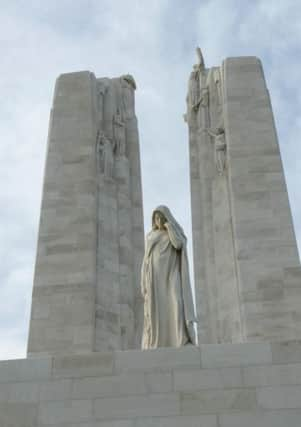Maiden City Great War Roll of Honour Part 24


Baird, Private James, 3630
James Baird, 2nd Battalion Royal Inniskilling Fusiliers, was born at Templemore, County Londonderry, enlisted at Londonderry, and resided in Glasgow.
He died on May 16, 1915, at the Battle of Festubert. Aged 23, he was the son of Mr and Mrs William John Baird, 497, Glasgow Road, Yoker, Clydebank, Glasgow, and his name is recorded on the Le Touret Memorial, Pas de Calais, France.
Advertisement
Hide AdAdvertisement
Hide AdFestubert was a village of France, located in the department of Pas-de-Calais, and prominent in the Great War.
The Battle of Festubert formed part of the Artois Offensive spearheaded by Joseph Joffre, commander in chief of the French forces. Launched by British commander Sir Douglas Haig after pressure applied to the British Expeditionary Force (BEF) by Joffre, Festubert marked the BEF’s second attack of the offensive, after a largely unsuccessful assault on May 9 at Neuve Chapelle.
A four-day-long artillery bombardment of the German positions by over 400 Allied guns firing over 100,000 shells preceded the attack on Festubert.
Although the bombardment failed to cause significant damage to the German front line, the initial attack, conducted by two predominately Indian divisions in fair weather conditions on the night of May 15, advanced rapidly, as the German Sixth Army (commanded by Crown Prince Rupprecht) retreated to positions directly in front of the village of Festubert.
Advertisement
Hide AdAdvertisement
Hide AdThe British 2nd and 7th divisions continued the attacks on May 16, but within two days had to be withdrawn due to heavy losses.
On May 18, under heavy rain, Canadian troops began another onslaught, but were forced to retreat under heavy German artillery fire. The Allied troops hurried to build trenches to consolidate the small gains made so far, as the German command sent a fresh injection of reserves to reinforce their lines.
On May 20, the Allies renewed the attacks at Festubert; over the next four days, they were able to capture the village from the Germans, a position that would be held by the Allies until the final German spring offensive in 1918.
Still, by the time the Allied command called off the attacks, the Battle of Festubert had resulted in gains of less than one kilometre of territory - at a cost of 16,000 Allied casualties.
Advertisement
Hide AdAdvertisement
Hide AdSir Frank Fox, in his book, The Royal Inniskillings in the World War, describes the actions of the 2nd Inniskillings at Festubert: ‘It was not until the Battle of Festubert, May 15-25, that the Inniskillings were called upon to show again their mettle in attack.
‘On May 12 they had marched through Richebourg to the line, taking over not the trenches, for it would be inaccurate to say there were trenches, but a series of frontline breastworks which had been erected as the best possible means of shelter in that waterlogged country. ‘These breastworks gave little or no protection against the enemy artillery fire, and up to the night of May 15, before the attack opened, the casualties suffered were 6 killed and 40 wounded.
‘Repeated efforts had been made since May 9 to win ground from the Germans on this sector.
‘As attacks